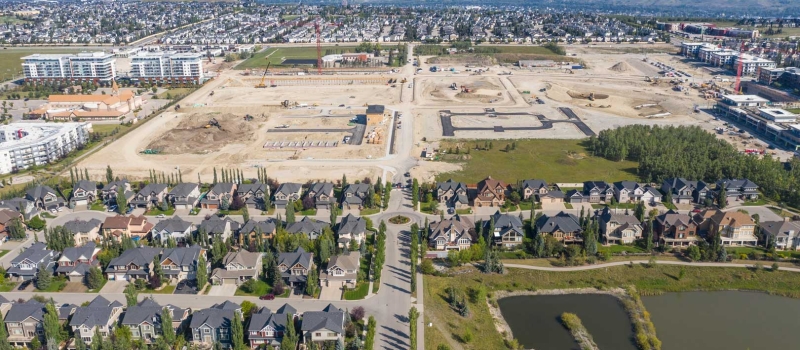How to Buy a Home in a New Construction Community

Buying a home in a new construction community is an exciting opportunity to create a personalized living space in a modern, well-planned environment. However, it can also be a complex process that differs significantly from purchasing an existing home. Here’s a comprehensive guide to help you navigate the journey of buying a home in a new construction community.
1. Research the Community and Builder
Community Research:
- Amenities and Features: Look into the amenities offered, such as parks, schools, recreational facilities, and shopping centres.
- Future Development Plans: Understand the long-term development plans for the community to ensure it aligns with your lifestyle and investment goals.
- Location: Consider the community’s proximity to your workplace, public transportation, and other essential services.
Builder Research:
- Reputation: Investigate the builder’s reputation through online reviews, Better Business Bureau ratings, and testimonials from previous buyers.
- Quality of Work: Visit other communities built by the same builder to assess the quality of construction and materials used.
- Warranty and Service: Check the warranties offered on the home and the builder’s policies on repairs and service.
2. Understand the Home Buying Process in New Construction
Financing:
- Pre-Approval: Get pre-approved for a mortgage to understand your budget and show builders that you are a serious buyer.
- Builder’s Lender: Some builders have preferred lenders who may offer incentives, such as closing cost assistance or upgrades.
Choosing a Lot and Model:
- Lot Selection: Choose a lot that suits your preferences regarding size, location within the community, and views.
- Home Models and Floor Plans: Explore different models and floor plans. Builders often have model homes you can tour to get a sense of the layout and finishes.
Customization and Upgrades:
- Standard Features vs. Upgrades: Understand what features are included as standard and what upgrades are available. Upgrades can significantly impact the final price of the home.
- Customization Options: Many builders offer options to customize aspects of the home, from floor plans to finishes. Ensure any customizations are documented in your contract.
3. Contracts and Legal Considerations
Purchase Agreement:
- Review Thoroughly: Carefully review the purchase agreement with your real estate agent or attorney to understand all terms and conditions.
- Inclusions and Exclusions: Ensure the contract specifies what is included in the price, such as appliances, landscaping, and any incentives offered by the builder.
Home Inspections:
- Phased Inspections: Schedule inspections at different stages of construction to catch potential issues early. This includes pre-drywall and final walkthrough inspections.
- Professional Inspector: Hire a professional home inspector who specializes in new construction to ensure the home meets all building codes and standards.
4. Managing the Construction Process
Communication with Builder:
- Updates: Maintain regular communication with the builder to stay informed about the construction progress and any potential delays.
Change Orders:
- Documentation: Ensure that any changes or upgrades you request during construction are documented in change orders, including costs and timelines.
- Approval Process: Understand the process for approving changes and how they might affect the construction timeline and budget.
5. Closing and Moving In
Final Walkthrough:
- Inspection: Conduct a thorough final walkthrough with the builder to identify any remaining issues or incomplete work.
- Punch List: Create a punch list of items that need to be addressed before closing.
Closing Process:
- Finalizing the Loan: Work with your lender to finalize your mortgage and ensure all paperwork is in order.
- Closing Costs: Be prepared for closing costs, which may include fees for the loan, title insurance, and other administrative expenses.
Buying a home in a new construction community requires careful planning, thorough research, and diligent follow-up. By understanding the unique aspects of this process and staying proactive, you can successfully navigate the journey and enjoy the benefits of living in a brand-new home tailored to your needs.
